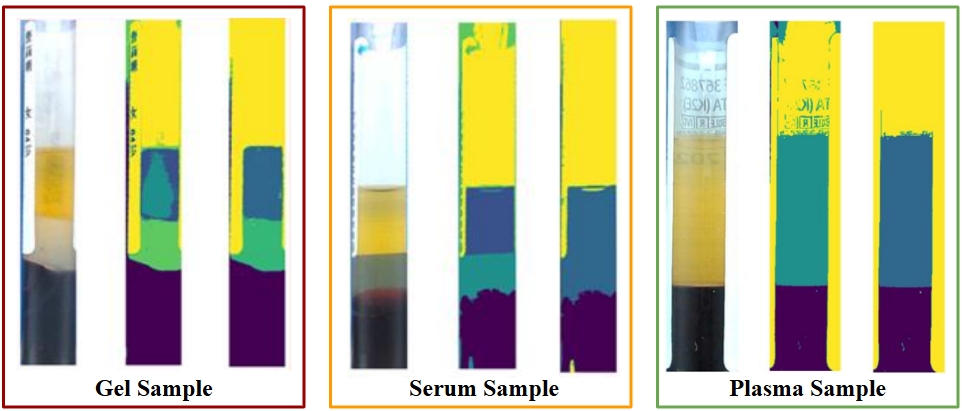Introduction
Identification of layers in centrifuged blood samples is a crucial aspect of medical diagnosis. Traditional methods have significant drawbacks: manual judgment is inefficient, photoelectric sensor-based methods lack robustness, and complete blood testing processes are cumbersome. An intuitive solution is to use machine learning for visual layer identification. This project proposes a machine learning based method that is capable of blood layer recognition and blood classification.
Design
This project develops a novel machine learning model that contains adaptive K-Means clustering, region filter, and type classification.
Adaptive K-Means Clustering: The K-Means clustering algorithm is used to identify the blood component regions. Using the elbow method, K-Means clustering can adaptively determine the number of layers.
Region Filter: A domain knowledge based region filter is proposed to combine regions and remove noises.
Type Classification: Based on the segmented blood regions, the blood samples can be categorized into gel samples, serum samples, and plasma samples.
Evaluation

In testing, the accuracy of correctly determining the number of layers was 87.15%. After excluding samples with incorrect cluster number estimation, the subsequent algorithm achieved a classification accuracy of 99.35%.
Conclusion
A layer recognition algorithm for centrifuged blood samples was developed to determine the specific type of blood sample. The process involves image cropping and convolution to extract blood regions, followed by determining the optimal number of clusters using the residual sum of squares (elbow method) in K-Means. The K-Means clustering algorithm is then applied to segment the different blood regions. Through heuristic rules based on connectivity, spatial relationships, and color characteristics, the regions are further merged and refined to achieve robust segmentation and classification results.
Future work will focus on improving determination of the correct number of layers, which is a major step in our pipeline and affects the performance significantly. Besides, to extend the practical applicability, we aim to decrease the system latency and enable real-time classification.